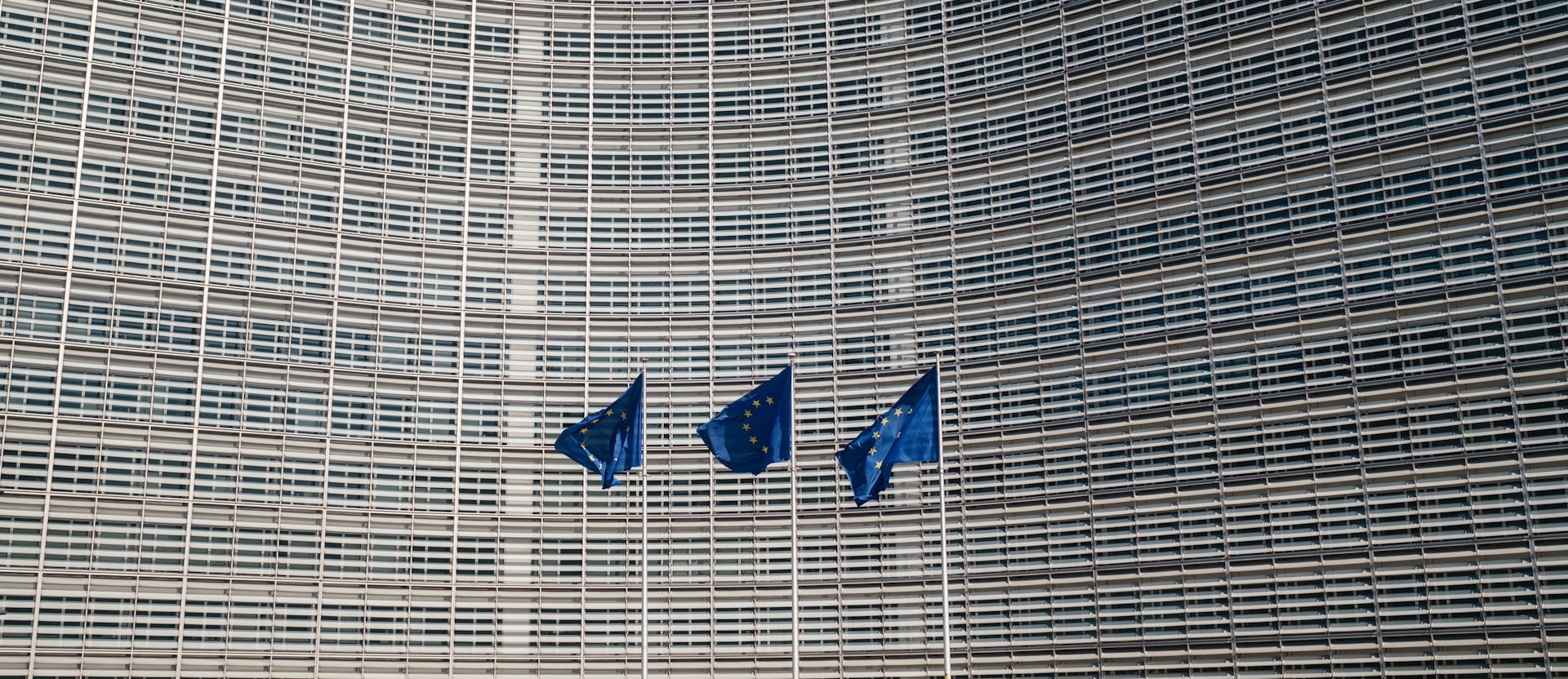In what’s being labelled a “landmark’’ moment for sustainable finance, EU negotiators last week finally announced the agreement of a provisional deal establishing a gold standard for European green bonds (EuGB).
Following the initial proposal for EuGB regulation in 2021, and having failed to reach consensus in December 2022, the deal looks to tackle greenwashing and establish the first comprehensive set of rules for green bond issuance alongside the bloc’s ambitious net-zero goals.
EU Lawmakers announced European Green Bonds standard which help companies and public authorities to raise funds on capital markets, while meeting rigorous sustainability requirements and protecting investors from greenwashing https://t.co/cwcXHujgoQ
— Amit Agrawal (@agrawalamit) March 7, 2023
As proponents continue to back the global significance of the proposal, whilst critics suggest it holds more symbolic than practical value, what does the deal outline? What does it change, and why is it important?
Green bonds: What’s the big deal?
Structurally speaking, “green” bonds are identical to other bonds; they represent an “I owe you” known as a debt security – between the bond issuer and an investor, where, in exchange for upfront cash, the investor is paid back with interest over time.
Bonds are a standard financial tool used by both governments and companies to raise capital for projects, where the “quality” of the bond, or rather the likelihood payments to investors will be met, is reflected in the bond’s interest rates.
Herein lies the key difference underlying a “green” bond; it is not a question of how they function, but rather what they fund.
Specifically, green bonds are fixed-income securities that raise capital for use in projects or activities with specific climate or environmental sustainability purposes.
Born in the wake of the 2007 IPCC climate change report, green bonds are a direct acknowledgement by those working within financial markets, and the investors they represent, that a mechanism driving funds towards climate projects was both missing and needed.
#Biodiversity & #Climate Crises are interconnected and require a systemic solution.
We must influence impact and this requires us to protect, #restore & re-wild Nature’s Strongholds.
Sustainable #finance is key
#NetZero #naturepositive📸credit @royalsociety @BHI_GLOBAL pic.twitter.com/COJOjkOfAe
— UN Biodiversity (@UNBiodiversity) March 11, 2023
Since the first green bond issuance in 2007, the market has expanded in numerous dimensions; not only did green bond issuance reach US$478.1 bn in 2022, but together with other related labelled bonds, including social, sustainability, sustainability-linked bonds and transition bonds, they account for a 5% total market share.
Whilst an explicit pro-environmental approach and consistent market growth paints a seemingly rosy picture, there are other vital considerations this birds-eye view omits.
So, what is missing?
The issues: Greenwashing, regulation and complexity
The increasing international drive for net zero carbon emissions by 2050 largely accounts for the rapid growth of the green bond market.
According to Mckinsey, yearly spending will need to amount to US$9.2tn to develop the green assets necessary to decarbonise the global economy. All in, this means both public and private investment is essential.
Despite rapid expansion reflecting positive intentions, it is its marriage with a complex and disparate regulatory landscape that underlies prevalent greenwashing concerns, expressed by both regulators and investors.
https://twitter.com/TashHurley/status/1577672353013719041
Numerous green bond principle (GBP) frameworks, where the ICMA GBP is the most widely accepted, provide guidance on what constitutes a green bond. Whilst GBPs outline how funds raised should be spent, how projects are evaluated and selected and how results should be reported, compliance remains entirely voluntary.
As such, it has been possible for projects to use bonds with a “green” label to leverage exaggerated or false environmental claims to raise money from investors, without the need to ever show how funds have been spent or what really constitutes the project’s “green-ness.”
With no single global standard or widely recognised legal definitions, alongside a marketplace entirely premised on voluntary compliance, it is difficult to conclusively say which bonds are green, or even assess how they are green.
Tackling the complexity, confusion and vagueness inherent to green bond issuance has been central to the EU’s drive to establish a green bond standard that simplifies the market-place for both investors and regulators, and reduces opportunistic greenwashing.
EuGB: The proposal
The proposal so far outlines the provisional requirements issuers will have to comply with in order to use the EuGB label, positioning it as a voluntary gold standard.
Organised around an explicit commitment to the net-zero transition, the EuGB framework coalesces around three central tenets: transparency, external reviewers and flexibility.
Transparency issues are tackled in numerous ways. In order to use the EuGB label, companies will have to prove that bond proceeds are being used to fund legitimate green projects in line with the EU green bond taxonomy.
The “taxonomy” is the definitive guide outlining the criteria that must be met in order to be classified under the EuGB standard. Whilst not a new feature of green bond principles, the need for issuers to demonstrate how projects align with taxonomy and continually report fund use is novel.
External reviewers have been identified in the EuGB proposal as a key part of the green bond puzzle. External reviewers are already used to ratify green bonds, however, under the EuGB standard, they will have to follow a strict registration system and supervisory framework to guarantee transparency and show effective management of conflicts of interest.
Flexibility has been explicitly referenced as an essential component of the EuGB proposition, where until the taxonomy framework is fully functional, 15% of proceeds from issuance can be invested in economic activities for which taxonomy criteria don’t yet exist.
Beyond the three tenets, the proposal recognises that the demands of the EuGB standard are high and where companies aren’t able to meet the gold standard, a number of voluntary disclosure requirements for other sustainability-related bonds are outlined.
Related Articles: The Future of Green Finance | What Is Green Finance and Why Does it Matter so Much? | ‘Toxic’ Bond Market Targeted for Financing Fossil Fuel Expansion | A New Chapter for UK Financial Services, and It’s Green! | The “Green Chance” for Brazil | ‘Green’ Investing: The Future of Business? | How the European Central Bank’s New Climate Policy Could Reduce Both Emissions and Inflation | To Fund Energy Transition, EU Launches Record Breaking Green Bond Programme
The central ambitions of the EuGB standard are: To simplify the landscape for investors, to give issuers confidence they are bringing the right investors on board, to drastically reduce the risk of greenwashing and to move the green bond market closer to a global standard.
MEP Paul Tang, who heads up the EU parliamentary committee for the EuGB proposal, says the ‘“regulation creates a gold standard green bonds can aspire to,’’ further clarifying that “with a clear system for disclosures, any green bonds not using this system, will likely be looked at with increasing suspicion.’’
The proposal is clearly an ambitious departure from current green bond standards, based on healthy intentions for investors and the bloc’s own net-zero targets.
But, although regulations are drawn up in negotiation rooms, they are not confined to this bubble. The EuGB standard must be usable in the real world to have any long-term and meaningful impact, which some critics are calling into question.
EuGB Critiques: Ambition gone too far?
Critiques of the EuGB standard highlight a mismatch between ambition and usability, particularly in reference to taxonomy.
David Ballegeer, a sustainable debt-focused partner at UK law firm, Linklaters, has described the taxonomy requirements as a “straightjacket,’’ which makes issuer compliance far too difficult.
This claim is supported by data released in a report by the EU’s platform on Sustainable Finance, which shows that less than 3% of global economic activity is currently aligned with the taxonomy.
Given the EU’s own finance experts acknowledge usability and practical challenges, the deputy CEO and head of sustainable finance at the ICMA Nicholas Pfaff, says it’s unrealistic to “pretend’’ that the EuGB standard can serve as a template for the rest of the market.
Pfaff further accuses the proposal of euro-centrism, describing the inherent appeal of the standard to the “European official sector,’’ more particularly in renewables that operate exclusively in the EU.
The lack of international applicability is a factor that supports doubts over the uptake of the standard, which commentators say ultimately won’t be solved until taxonomy usability challenges are addressed.
Sentiments all seemingly point to a lack of confidence that the EuGB standard will be broadly taken up, or really play a significant part in the market at all.
Whilst sovereign and corporate users of green bonds are already independently seeking better alignment with established GBP taxonomy, the incentive to adopt the ambitious, but costly EuGB standard seems unlikely and lacking.
What’s next: Killing the Golden Goose?
Despite critique, the EuGB proposal correctly identifies the central importance of bonds in mobilising private investment towards tackling EU and, by extension, global climate issues.
Ambitions centred on the creation of a simplified marketplace free of greenwashing are both commendable and necessary. But where ambitions have potentially reached too far, the EuGB standard risks low uptake and a shortfall in the goal of global relevance.
Alongside the recent announcement of the European Central Bank’s new climate indicators, the EuGB proposal also reflects deeper entrenchment of sustainability issues in financial policy arenas, where engagement from central banks and other key influential actors across global and state levels will undoubtedly affect future success.
Although the regulation is yet to officially be accepted by both the EU commission and parliament, it undoubtedly represents a landmark moment in sustainable finance, where it is unclear as yet if it will move beyond the symbolic and into the practical.
What remains certain, as pointed out by the head of the non-profit Climate Bonds Initiative, Sean Kidney, “whatever we do, we have to be sure we build on the success of green bonds and don’t kill the goose that laid the golden egg.’’
Editor’s Note: The opinions expressed here by the authors are their own, not those of Impakter.com.













